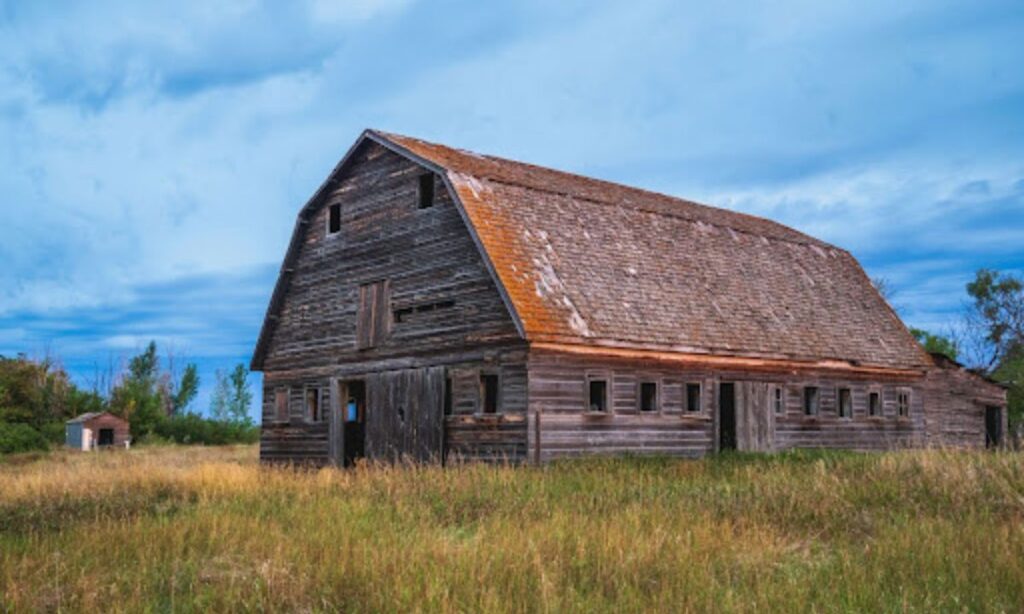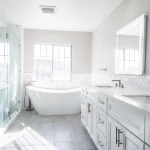Many barn collapses aren’t sudden they’re preventable. Structural damage from foundation cracks, sagging roofs, or leaning walls often goes unnoticed until it’s too late.
Heavy snow, strong winds, and years of wear can weaken a barn’s frame, putting your property, equipment, and livestock at risk. The longer you wait, the more expensive and dangerous the damage becomes.
But here’s the good news. Most barn issues can be repaired before they get worse. If you notice any of these 7 warning signs, it’s time to call trusted barn repair contractors near me before minor problems turn into major disasters.
1. Foundation Cracks or Sinking
Your barn rests on its foundation. If that starts to fail, everything above it is at risk.
Many barn owners don’t check their foundations regularly, assuming that if the walls look fine, everything is stable. However, small foundation cracks can widen, causing floors to shift, walls to lean, and doors to jam.
Signs to watch for:
- Cracks appear in the concrete or stone foundation, especially if they’re widening.
- The barn seems uneven or leaning on one side.
- Water pooling near the foundation after rain can lead to erosion and further damage.
At first, these might seem minor. But over time, a weak foundation causes structural instability, making repairs more expensive or, worse, requiring a full rebuild.
2. Leaning or Bowing Walls
Stand back and look at your barn from a distance. Do the walls appear straight and strong, or are they bowing outward, pulling away from the frame, or shifting inward?
This isn’t just cosmetic. It’s a sign that the barn’s frame is under stress.
Red flags:
- Walls that look bulged or warped instead of straight.
- Gaps form between beams, especially at the corners.
- Doors or windows that no longer shut properly, even after adjustments.
Leaning walls don’t fix themselves, they only get worse. When the frame weakens, it puts pressure on the entire structure, making the barn more vulnerable to wind, weather, and eventual collapse.
3. A Sagging or Leaky Roof
If you step inside your barn on a rainy day, do you see dripping water or damp spots on the ceiling? That’s a clear sign of roof failure.
But even before leaks appear, the roof may be showing structural weakness that leads to bigger issues.
What to check:
- Dips or sagging areas in the roofline. It means the supports are struggling.
- Water stains on rafters or ceiling panels, even if no leaks are visible yet.
- Missing, curling, or damaged shingles or metal panels that leave the barn exposed.
A weak roof is one of the biggest threats to your barn’s longevity. Left unchecked, leaks cause rot, mold, and insulation failure, while sagging sections increase the risk of collapse under heavy snow or strong winds.
4. Rotting or Warped Wood
Wood is the backbone of most barns, but it doesn’t last forever. Moisture, pests, and time all take their toll.
The problem? Wood rot spreads fast. What starts as a small soft spot can quickly weaken support beams, walls, and flooring, turning a once-sturdy barn into a safety hazard.
Signs your barn’s wood is deteriorating:
- Beams or planks feel soft or spongy when pressed.
- Dark spots, mold, or fungal growth are spreading on wood surfaces.
- Warped or swollen boards no longer fit together properly.
Rot doesn’t just affect appearance. It compromises the entire structure. If you find even a small section of rotted wood, chances are, there’s more hidden damage that needs attention.
5. Loose Siding or Gaps in the Walls
If sunlight or drafts are slipping through cracks in your barn’s walls, it’s more than just an annoyance but a sign that the structure is weakening. Gaps in siding allow moisture, pests, and harsh weather to creep in, accelerating deterioration.
How to spot siding problems:
- Panels are loose, warped, or missing.
- Gaps between boards have widened over time.
- Drafts or leaks appear inside the barn, even when doors are shut.
Left unaddressed, these issues worsen with every storm and season change, leading to costly repairs and a much shorter barn lifespan.
6. Unstable Flooring or Loose Beams
Walk across your barn’s floor and ask whether it creaks, sags, or feels uneven. That’s not just age, it’s a warning sign.
A weak floor puts livestock, equipment, and workers at risk of serious injury if it gives way.
Signs of flooring failure:
- Floorboards feel spongy or weak underfoot.
- Beams shift or move slightly when weight is applied.
- Sections of the floor appear sunk or uneven.
Ignoring these signs could lead to sudden collapses, making repairs far more expensive than catching the problem early. If your barn’s flooring doesn’t feel secure, it’s time to inspect what’s happening underneath.
7. Rusted Metal or Failing Fasteners
Wood isn’t the only part of your barn that weakens over time metal fasteners, brackets, and hinges play a huge role in keeping the structure intact. When these start to fail, walls shift, doors become harder to open, and the entire barn loses stability.
Signs of metal deterioration:
- Rust forming on nails, screws, support brackets, or hinges.
- Doors or gates dragging, sticking, or becoming difficult to close.
- Corrosion on roof panels or metal siding, weakening protection from the elements.
A barn is only as strong as the fasteners holding it together. If these small components start to fail, the entire structure becomes vulnerable, especially in storms or harsh weather conditions.
ALSO READ: Top Secrets for a Durable Roof That Stands the Test of Time
Who to Call for Help
If your barn shows any of these warning signs, waiting will only make repairs more expensive—and in some cases, put your barn at risk of collapse.
A professional barn repair contractor can:
- Reinforce weak foundations, leaning walls, and sagging roofs.
- Replace rotted wood, damaged siding, and failing fasteners.
- Ensure your barn is structurally sound for years to come.
The longer you wait, the worse the damage gets. If your barn is showing signs of trouble, now is the time to take action.
Consult Woodford Barn Repair and Restoration – a trusted barn repair expert to assess the condition and provide solutions that ensure your barn remains safe and standing for years to come.







